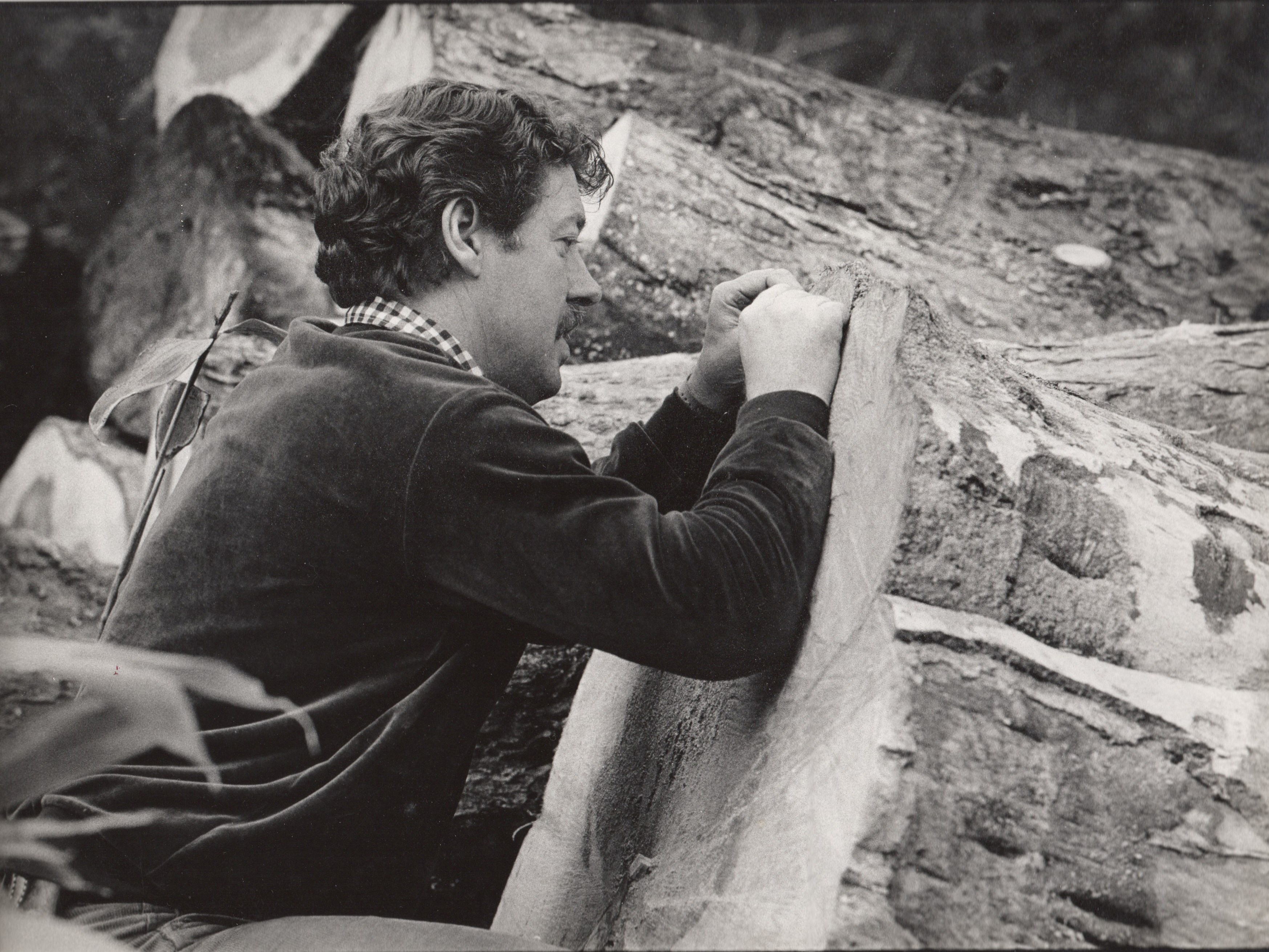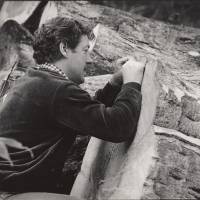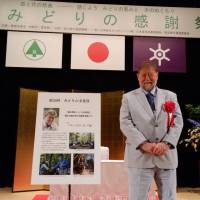As I write this in my home outside Kurohime, it's astonishing to realize it has been 36 years since I came to live in the hills of northern Nagano Prefecture.
Back then, as I still am, I was eager to learn more about the wildlife and legends of our mountains, so I studied to get the permits I needed to join the local hunting association. Actually, though, the members generously let me go along with them as a beater even before I'd completed all the exams and shooting tests and satisfied all the police checks required to qualify for my gun and hunting licenses.
Afterward, in April 1981, I joined a "pest extermination" hunt for hares on the slopes of nearby Mount Reisenji and Mount Iizuna. We left our vehicles on the side of the road to Togakushi then made our way down the steep, forested valley of the River Torii before heading up the mountain slopes.
We all carried traditional round kanjiki snowshoes, but we didn't have to use them. There had been a tremendous amount of snow that winter and it lay 4 to 5 meters deep on the mountain. However, warmer sunny days and cold, freezing nights had compacted it so that even a person of my size could hike along without sinking up to their knees.
It was a glorious day. The bright sun had warmed the bark of the trees, bringing out insects that attracted many little birds such as nuthatches and tits both great, varied and long-tailed that flitted through the higher branches, merrily chirping and cheeping, while jays screeched and scolded and hawks trilled as they circled above.
The pristine, snowy floor of the forest was a crisscrossed storybook imprinted with the tracks of foxes, badgers, tanuki (raccoon dogs), weasels, martens, squirrels — and plenty of hares.
That day we also saw the tracks of seven bears, including a mother and two small cubs that had recently emerged from their winter den, and we actually saw four, though I was relieved we didn't have a special permit to hunt them out of season. Ours was for hares, not bears.
We hiked through magnificent stands of beech, oak, elm, magnolia, mountain cherry and dozens of other trees, many of them very old. At noon we built a fire, ate our rice balls, brewed tea and roasted the hearts, livers and entrails of the first hares the hunters shot, grilled on sticks and lightly salted.
The variety of trees and the age of the forest was the reason for the profusion and diversity of its wildlife. For me it was a wonderful day. I was learning so much from my companions. Leaves had not begun to bud, so through the trees we could see the little town below, as well as Lake Nojiri and Mount Madarou beyond, and then further to the Shiga mountain range. I could see cars, buses and lorries and and even hear trains somewhere far away as their sound carried on a gentle wind — yet we were up in the realm of ancient trees and bears.
I filled several pages of my diary that night back in the old thatched house my new wife and I had rented.
Just 12 months later, in April 1982, I packed some simple camping and survival gear, and a camera, and returned to the same forested slopes we'd hiked the previous year, hoping to get some photographs of bears.
Before I left I told my wife where I was going and left a note for the chairman of the hunting association explaining what I was doing and that it was my intention to bivouac for at least one night on the mountain.
Well, it took me a few hours to hike up to where we had begun to see bear tracks the year before, but this time there were no tracks — or bears. In fact, there were no trees — just stumps.
Dismayed and horrified, I swept snow off several of the bigger stumps with my knife so I could count the annual growth rings. The oldest of the trees had been growing there for more than 400 years.
Bitterly disappointed and intensely angry, I hiked back down and went to the house of the chairman of the hunting association. This time he was at home and apologized for not being there when I'd called in the morning.
"We could have told you," he said, "they cleared those slopes last autumn, while you were away." (I had been filming a documentary in Scotland.)
Then he informed me of plans the national government's Forestry Agency had to fell yet more ancient forest on mighty Mount Kurohime that overlooks the whole area.
"You ought to go to the media with this stuff," I urged him. "If they cut down all those old forests, the bears are bound to come down to feed in fields and orchards because there'll be nothing left for them on the mountain."
With a resigned look on his face, the chairman waved the suggestion away, saying, "Japanese don't listen to other Japanese."
That was the beginning of a battle I had with the Forestry Agency that lasted more than 20 years and took me all over Japan.
We debated face-to-face in both private and public meetings, I gave dozens of lectures and wrote even more articles, and I even made television documentaries strongly criticizing the agency's policies. Mind you, during that time I strictly avoided any personal comments, and never tried to stab anybody in the back.
I also spent most of the money I earned from books, TV appearances and adverts on restoring abused and neglected woodland to healthy diversity — and several of the officials with whom I argued became trusted friends.
In many other countries, criticism of the government by an outsider could have unpleasant consequences. In Japan, though, we still have freedom of speech.
Indeed, on May 14 this year, at the Iino Hall in Tokyo's Chiyoda Ward, the National Land Afforestation Promotion Organization, an affiliate of the Forestry Agency, awarded me the 26th Green Culture Prize for my efforts in and on behalf of the nation's woodlands. Princess Mako, the oldest granddaughter of the Emperor, was in attendance, as were the brass band of the Tokyo City Fire Brigade and a choir of 84 children, among others, of course.
It made me very proud. I have never resented visiting forests all over the place, in rain, sleet, snow and even when they're plagued by summer bugs, but I could have done without the stress of campaigning, lecturing, arguing and sitting on committees that seemed to endlessly hold meetings. It was all worth it, though.
Moreover, I am proud and honored to have been a citizen of Japan since 1995, and if I ever have any problems with anything in this country in the future I'll do my best to tackle them head-on, with honesty and a willingness to listen — and without any personal rancor. That's the way the Japanese government has dealt with me, and I am humbly grateful for that.
The Emperor and Empress are scheduled to visit the C.W. Nicol Afan Woodland Trust in Kurohime, Nagano Prefecture, on June 6. It will be my great pleasure and honor to guide them on a tour of our beautiful woods and streams and ponds, and readers of Old Nic's Notebook published on July 3 will be able to share in our big day, too.





















With your current subscription plan you can comment on stories. However, before writing your first comment, please create a display name in the Profile section of your subscriber account page.